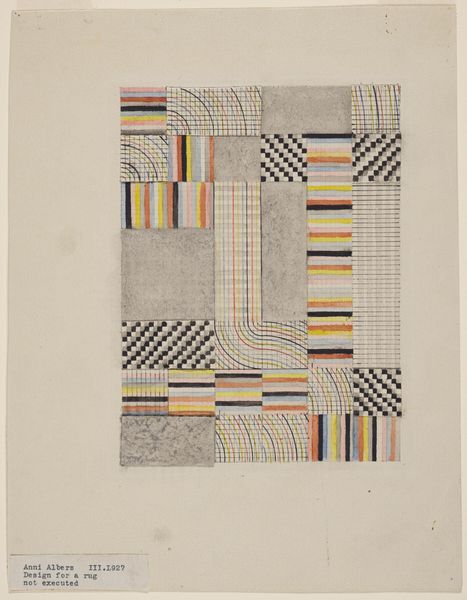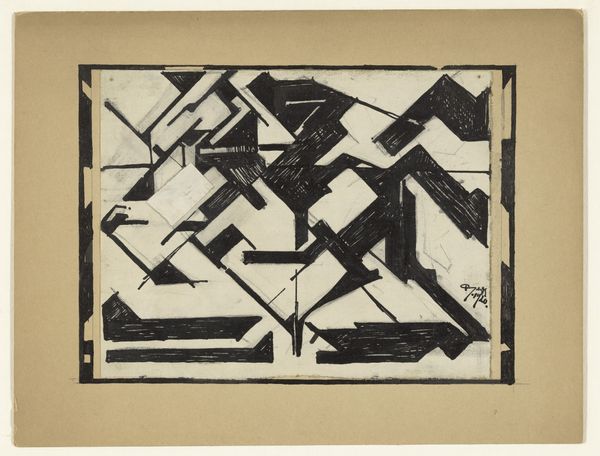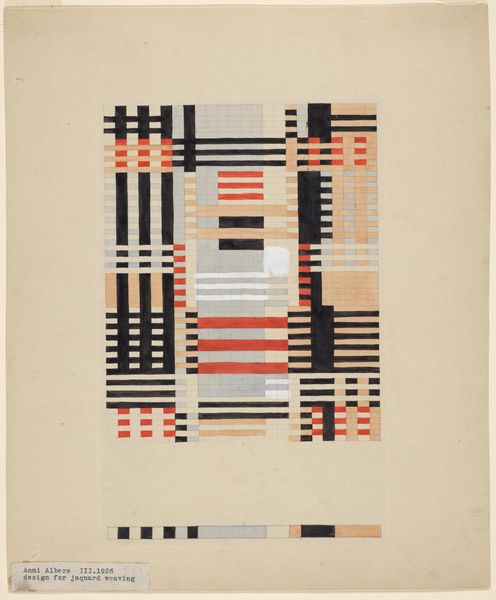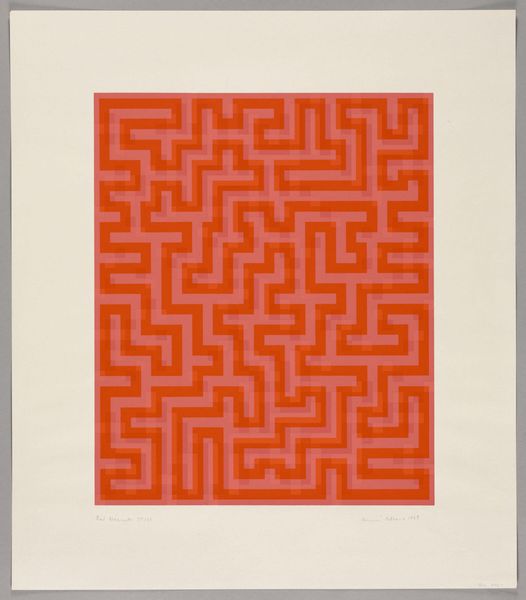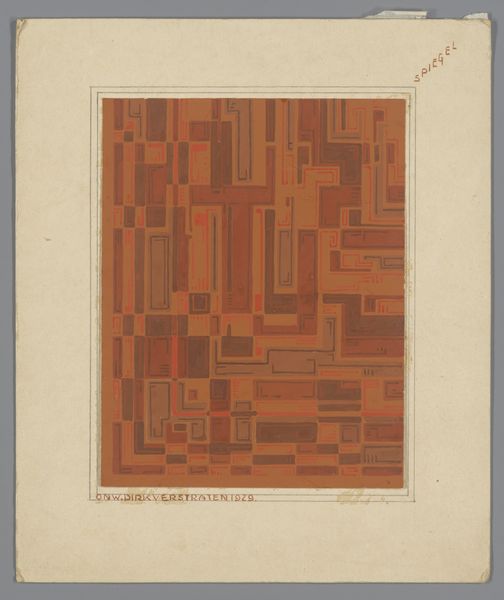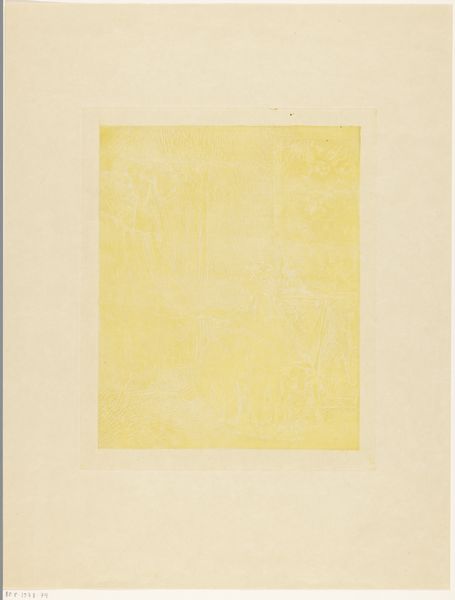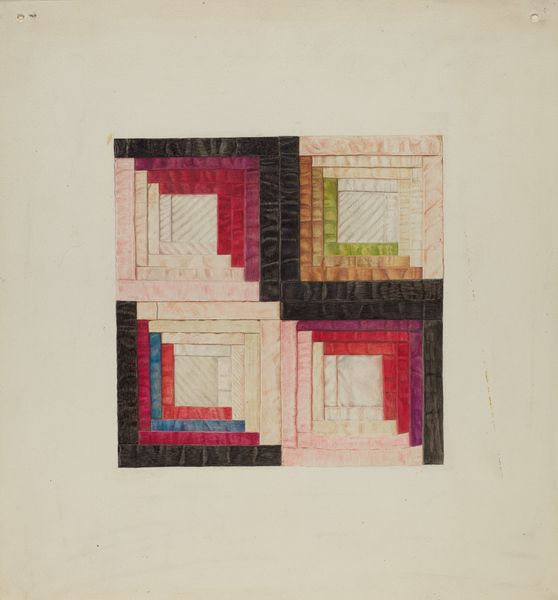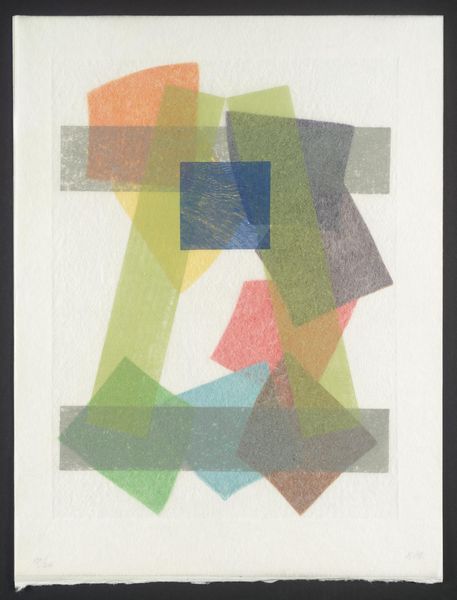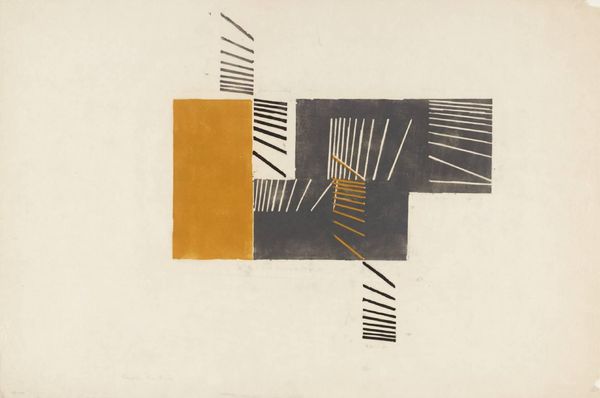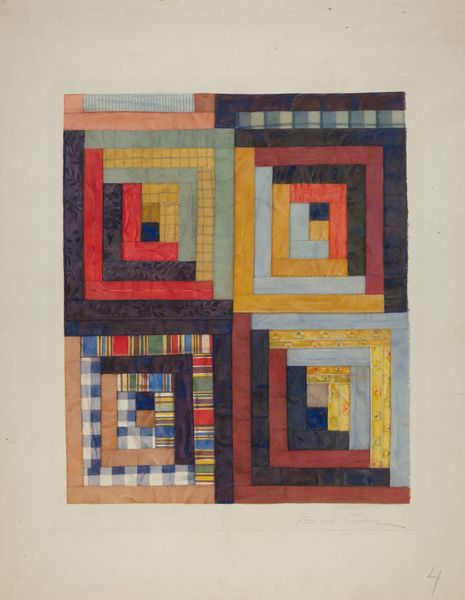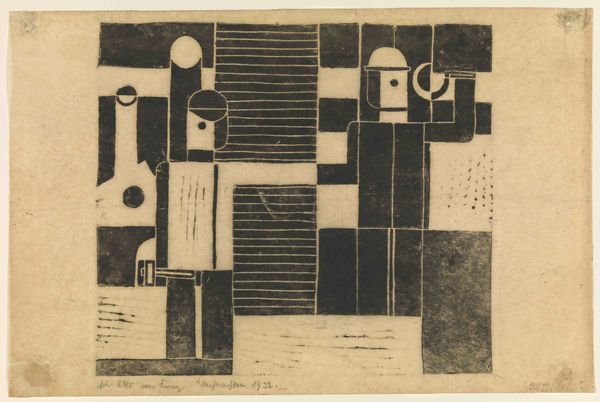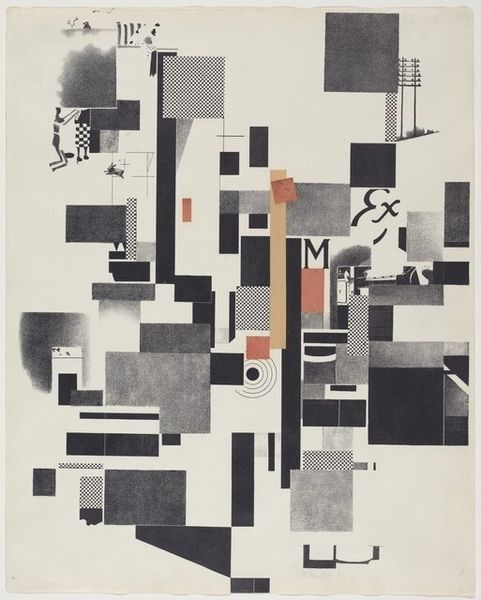
graphic-art, print
#
de-stijl
#
graphic-art
# print
#
op art
#
geometric
#
geometric-abstraction
Dimensions: height 115 mm, width 100 mm
Copyright: Rijks Museum: Open Domain
Editor: Here we have Richard Nicolaüs Roland Holst's "Ex libris van M. Mendels," created in 1924. It’s a print, fairly small, and features striking geometric shapes in red, yellow and white. There's a real boldness to it. How do you interpret this work, given the social and political climate of the time? Curator: The boldness you note is critical. Consider this within the broader context of De Stijl. This wasn’t just about aesthetics; it was a utopian project. Artists believed that stripping art down to its essential geometric forms and primary colors could create a universal visual language. But whose universality? And at whose expense? Editor: That’s a fascinating point. It looks so simple, yet you're suggesting it's loaded with ideology. Are you saying it relates to power? Curator: Exactly. Think about who gets to define "universal." The move towards geometric abstraction often sidelined other artistic traditions, particularly those of women and people of color, under the guise of progress. Where do you see evidence of social impact relating to art historical moments and movements? Editor: The emphasis on pure abstraction maybe inadvertently reinforces a Western, rationalistic worldview. Was there any resistance? Curator: Absolutely. Many artists and critics, even within Europe, challenged this narrow definition of modernity. It's crucial to consider the voices that were excluded and the narratives that were suppressed to truly understand movements like De Stijl. Thinking intersectionally can open this visual language up into varied areas that can expand the discussion beyond what is presented directly. Editor: I hadn’t thought about it that way. Now, I see that behind the geometric perfection is a much more complex story about artistic dominance. Curator: And hopefully, seeing this tension helps you consider the role art plays in constructing social and cultural norms. The visual language can be a powerful, political force that impacts those who may not benefit from them. Editor: This conversation has opened my eyes to how art reflects the intricacies of political context, and is worth critical engagement to further discuss cultural relevancy.
Comments
No comments
Be the first to comment and join the conversation on the ultimate creative platform.
